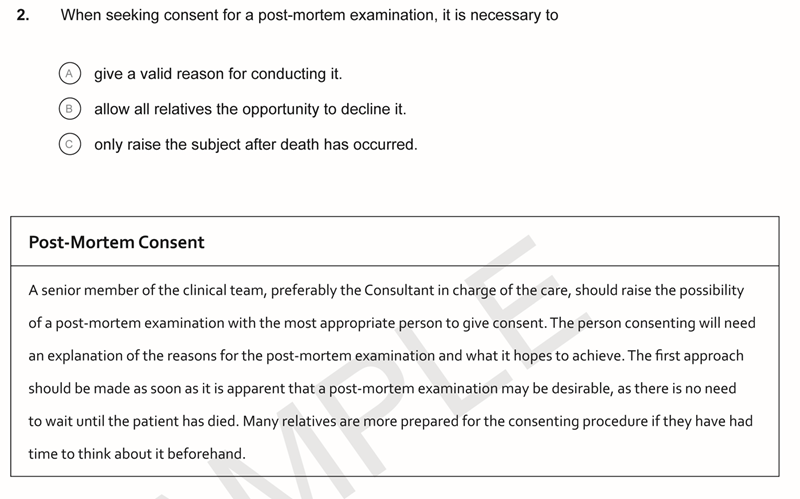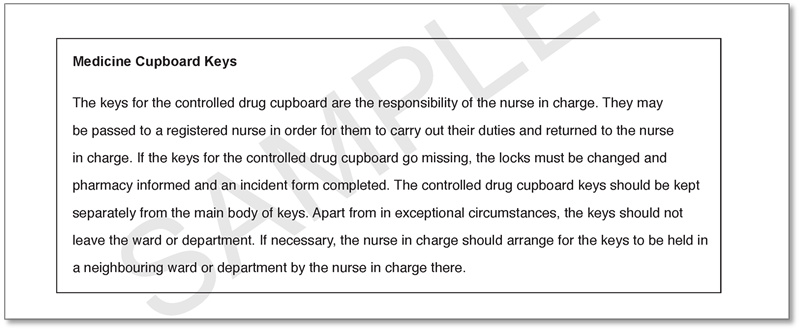
As a health professional, you need to read a range of different texts in the workplace. In a single shift, you may need to refer to a hospital policy, a memo, an email, a notice, a guideline, and more. These workplace communications are there to help you work according to standard and to keep up to date with workplace requirements. OET Reading Part B uses these texts to assess your ability to identify main ideas, purpose and detail.
In this blog post, you’ll learn the format of OET Reading Part B, discover the skills being tested, and see some sample questions. You’ll also learn some test tips and preparation recommendations from OET experts.
Test Format:
There are six short extracts in Part B. Each one is about 100-140 words. And each one has a 3-option multiple choice question. You have 45 minutes in total to complete Reading Parts B and C.
OET Reading Part B format at a glance:
- Six workplace extracts
- 100-140 words each
- One 3-option multiple-choice question per extract
- 45 minutes for Reading Part B and C combined
Skills:
OET Reading Part B tasks reflect the real-world skill of understanding what needs to be done in response to a workplace text. Part B uses extracts from common workplace communications to test your ability to read for main ideas (the overall message or point of an extract), your ability to read for purpose, (to understand why the text has been written), and your ability to read for detail (to recognise important information within a text).
Sample task:
For OET on paper, you’ll receive your Part B and C Question papers together. Each Part B question is on a separate page and the instructions remind you to shade in the circle completely to answer A B or C. For OET on computer, each question is on a separate screen and you left click the mouse to select your answer.
The questions might be written as complete questions or as incomplete sentences.
Complete question:
| What does this manual tell us about spacer devices? |
Incomplete sentence:
| When seeking consent for a post-mortem examination, it is necessary to |
The six questions are all independent – there’s no link between them so you should deal with them one by one. Always start by reading the question first so that you know what you’re reading for.
In the example mentioned above – When seeking consent for a post-mortem examination, it is necessary to – you would then read the text to find out what a person must do when seeking consent for a post-mortem examination.
Reading the text with that question in mind will help you to focus and choose the correct answer.
Try it yourself (answer at bottom of page):

Test tips:
Here are 4 tips to succeed in Part B.
1) Read the question carefully.
This tells you what you’re reading for, so read it before you look at the text. Are you being asked about the overall purpose of the text? Or perhaps the question asks you to focus on a more specific part of the text. Use the question to read with purpose.
2) Notice all elements of the answer options.
When selecting your answer, make sure that all elements of the option are presented in the text.
Look at this question as an example. (Sample Test 2, Part B, Question 1)

For option A to be correct, you would need to find evidence in the text that the nurse in charge must (has to) supervise (oversee) the opening of the controlled drug cupboard, not just any drug cupboard. Check the text. Can you find evidence of this?

Sometimes an option will contain some information from the text, but not all. In this particular case, the text mentions a controlled drug cupboard but it does not say that the nurse in charge must supervise the opening. So, it’s not a correct answer. C is the correct answer.
3) Focus on meaning.
As you read, there may be words that you don’t know. Try to skip these words or use the context to guess their meaning and focus instead on the overall message of the sentence or section. Use the words you do know, and don’t panic about those you don’t.
4) Manage your time.
Remember you have 45 minutes for Parts B and C combined. There are 16 questions in Part C and two long texts, so don’t spend too long on Part B. If you’re stuck on a question, have a guess and return later if you have time. Don’t leave any questions unanswered.
Preparation recommendations:
To prepare for Part B, you need to practise reading workplace texts for meaning and purpose. Here are some ways to build these skills.
1) Practise summarising when reading.
Read short healthcare workplace texts or Part B texts and write one or two-sentence summaries of what you read. Work on capturing the main idea of the text – or what should happen as a result of it. This will help you to read for gist rather than focusing on individual words.
2) Increase your command of complex grammar.
Part B texts are often quite dense – a lot of information is packed into a small amount space. To be able to understand these texts, you need to know about how complex sentences work, how to use subordinating conjunctions, how to use relative clauses, conditionals, participle clauses and noun phrases. So, work with a teacher if you can or simply get online and find out for yourself.
3) Analyse sample tests.
When you try sample practice tests, after you’ve checked the answers, look at each Part B to see exactly why an answer is correct and also why the other options are incorrect. There will always be good reasons. Make sure you can identify in the text why an answer is right or wrong. This will help you to read more carefully and can also highlight any gaps you have in terms of vocabulary and grammar.
Remember that we have practice tests and an extensive library of on-demand lessons to help you prepare for Part B.
Continue working on your reading skills with these resources:
Reading Part B on-demand lesson library
Question 2 answer: A
